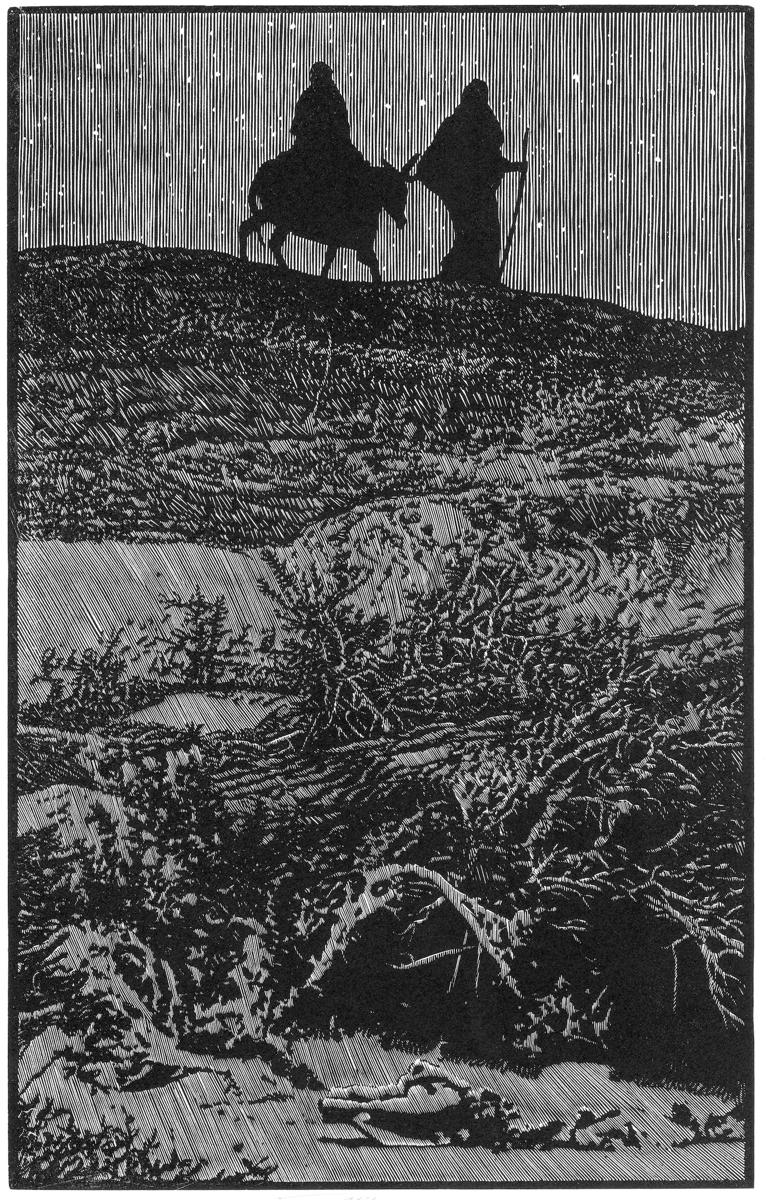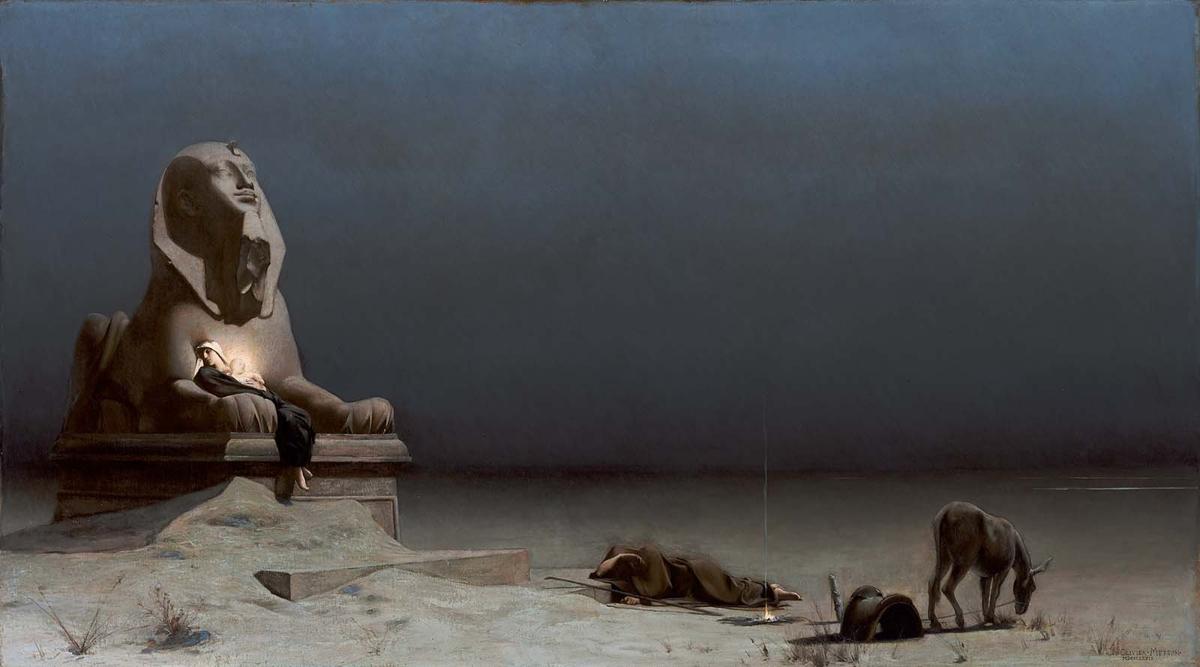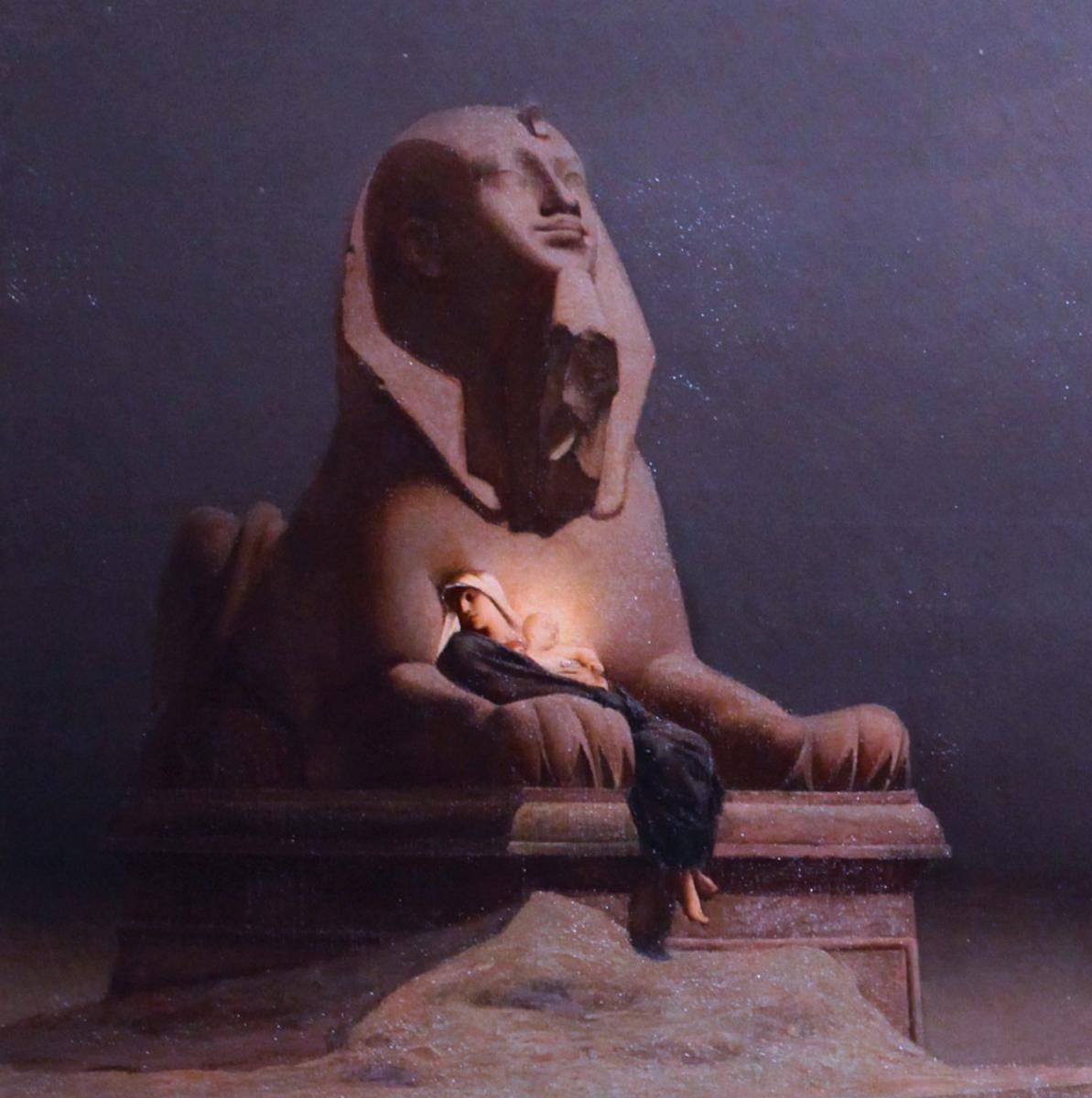December 29: A Savior for Israel, Egypt & the Entire World
♫ Music:
Day 32 - Wednesday, December 29
Title: A SAVIOR FOR ISRAEL, EGYPT & THE ENTIRE WORLD
Scripture: Luke 2:30-32; Isaiah 19:19-22
“For my eyes have seen Your salvation, which You have prepared before the face of all peoples, a light to bring revelation to the Gentiles and the glory of Your people Israel.”
In that day there will be an altar to the Lord in the midst of the land of Egypt, and a pillar to the Lord at its border. And it will be for a sign and for a witness to the Lord of hosts in the land of Egypt; for they will cry to the Lord because of the oppressors, and He will send them a Savior and a Mighty One, and He will deliver them. Then the Lord will be known to Egypt, and the Egyptians will know the Lord in that day, and will make sacrifice and offering; yes, they will make a vow to the Lord and perform it. And the Lord will strike Egypt, He will strike and heal it; they will return to the Lord, and He will be entreated by them and heal them.
Poetry:
The Invitation
by George Herbert
Come ye hither all, whose taste
Is your waste;
Save your cost, and mend your fare.
God is here prepar’d and drest,
And the feast,
God, in whom all dainties are.
Come ye hither all, whom wine
Doth define,
Naming you not to your good:
Weep what ye have drunk amisse,
And drink this,
Which before ye drink is blood.
Come ye hither all, whom pain
Doth arraign,
Bringing all your sins to sight:
Taste and fear not: God is here
In this cheer,
And on sin doth cast the fright.
Come ye hither all, whom joy
Doth destroy,
While ye graze without your bounds:
Here is joy that drowneth quite
Your delight,
As a flood the lower grounds.
Come ye hither all, whose love
Is your dove,
And exalts you to the sky:
Here is love, which having breath
Ev’n in death,
After death can never die.
Lord I have invited all,
And I shall
Still invite, still call to thee:
For it seems but just and right
In my sight,
Where is all, there all should be.
A SAVIOR FOR ISRAEL, EGYPT, AND THE ENTIRE WORLD
When Jesus told his followers that they should love, rather than hate, their enemies (Matthew 5:44), it is the most charitable, and from a human perspective, perhaps the most unnatural, command ever given. Jesus revealed in his time on earth what forgiveness requires, and how love can accomplish the impossible. Our artwork for today’s devotional calls us to remember Mary and Joseph’s passage through Egypt, and the incredible provision for the Messiah within the belly of the beast that once sought to destroy God’s people on earth. The heart of God towards all people is revealed in the establishment of His kingdom within the midst of its one time greatest earthly adversaries. Israel’s four-hundred-year bondage to Egypt, the Exodus, and subsequent conflict between Israel and Egypt were not pushed to the side, but are in fact brought to the center. The gentiles referred to in Luke 2:30-32 includes everyone, even traditional enemies like Egypt. Isaiah could not have named a more contentious relationship than the one that existed between Israel and Egypt, yet those very people who were once seen as enemies will one day be part of God’s restorative work across the whole earth. As the Israeli slaves were once struck blows by their Egyptian overseers, Isaiah promises that the Lord will both strike and heal the land, including this place of onetime persecution and oppression. In Luc- Olivier Merson’s painting, even the Sphinx serves as the resting place for the Child Messiah.
George Herbert’s poem “The Invitation” extends the boundaries of this incredibly welcoming kingdom to everyone, especially those who seem most headed in the wrong direction. Our “taste” for the things of this world must be replaced with a spiritual banquet prepared by God, a sumptuous feast free for the taking (stanza one). Those previously defined by wine can now be cleansed in the blood of Christ (stanza two). The exaltation of earthly love is portrayed by Herbert as a lesser thing, a thing that in its mortality must one day die, but whose perfection in God’s kingdom will live eternally (stanza five).
Some of my students are currently reading Shusaku Endo's Silence, a novel that portrays a priest's attempt to find forgiveness for even the most Judas-like individual, the duplicitous Kichjiro. From a human perspective, Kichijiro is the least appealing of converts, a coward who betrays the Christian community, including his own family. Father Rodrigues struggles with his disgust and lack of compassion for this man, realizing ultimately that we all fall short of God's glory, that none of us are righteous apart from the grace of God. In God's capacious kingdom, even betrayers like Kichijiro can be forgiven. Fernando Ortega’s lyrics bring us back to the images that began this devotional, the story of a child who is also a King, making it possible for even those who seem furthest away, geographically, physically, or spiritually, to enter the promised grace of eternal salvation. Jesus is a Savior for every sinner in the entire world.
Prayer:
Lord, give us hearts of forgiveness, ears of compassion, and divine humility. Let us not be quick to judge others made in your image, but rather let us rejoice in the people who you have placed all around us, as every one of us is in need of your mercy, grace, and salvation.
Amen
Devotion Author:
Dr. Marc Malandra
Professor of English
Biola University
For more information about the artwork, music, poetry, and devotional writer selected for this day, we have provided resources under the “About” tab located next to the “Devotional” tab.
About the Artwork #1:
Rest on the Flight into Egypt
Luc-Olivier Merson
1879
Oil on canvas
71.8 x 128.3 cm
Bequest of George Golding Kennedy
Museum of Fine Arts
Boston, MA
Fleeing persecution at the hands of Roman authorities, the Holy Family takes refuge in Egypt. Joseph dozes beside a dying campfire while his donkey grazes on sparse desert grass. At left, the Virgin Mary and infant Jesus, crowned with a halo of light, sleep peacefully in the arms of a sphinx, its eyes turned to the heavens where the first stars have begun to appear. A successful artist within the French Academy, Merson never traveled to North Africa, but his use of archeological detail creates the illusion of an eyewitness account—breathing new life into a time–honored subject.
About the Artist #1:
Luc-Olivier Merson (1846–1920) was a French academic painter and illustrator known for his postage stamp and currency designs. He studied at the École de Dessin and then at the École des Beaux-Arts. During his five years spent working in Italy, he concentrated on religious and historical subjects in his art. Merson did major decorative commissions for such institutions as the Palais de Justice, the Louis Pasteur Museum, and the mosaic in the chancel vault in the Basilica of the Sacré Cœur. He also did the artwork for stained-glass windows, an example of which can be found in the Church of the Holy Trinity Rittenhouse Square in Philadelphia, Pennsylvania. By 1900 Merson was designing postage stamps for the French post and the Monaco post. In 1908 he was contracted by the Bank of France to create a number of designs for some of the country's banknotes. Between 1906 and 1911 he taught at the École des Beaux-Arts, with students such as Clément Serveau, who would also eventually design stamps and banknotes himself. In recognition of his contribution to French culture, he was awarded the Legion of Honor. Merson’s work has been largely forgotten as a result of the overwhelming popularity of the impressionists and other artistic movements. https://en.wikipedia.org/wiki/Luc-Olivier_Merson
About the Artwork #2:
Flight into Egypt
Barry Moser
1995–1999
Relief engraving
11.5 x 7.25 in.
Pennyroyal Caxton Bible
As the new millennium approached, artist Barry Moser began working with a team of expert craftsmen and scholars, and continued the work for more than four years, to produce the Pennyroyal Caxton Bible. It is the only twentieth-century Bible with illustrations for every book of both the Old and New Testaments that were invented and executed by a single artist. There are two hundred thirty-two engraved illustrations. Owing to his use of live models and photographs of real people, Moser’s illustrations bring the ancient characters of the Bible to a contemporary reality. The effect is often as startling and unsettling as it is moving. Moser has described his work as “a struggle to engage not only a sacred text but the greatest monument of our language; to grapple with typography and images befitting such sanctity and monumentality; and to wrestle with the devils and angels that reside therein.”
https://www.moser-pennyroyal.com/pennyroyal-caxton-bible-about
https://special-collections.wp.st-andrews.ac.uk/2014/06/27/the-pennyroyal-caxton-bible-a-new-gift/
About the Artist #2:
Barry Moser (b. 1940) was born in Chattanooga, Tennessee. He put himself through his last two years of college as a Methodist preacher, but his calling to the ministry didn’t last. He was accepted into the Theological Seminary at Vanderbilt, but he declined to attend. He moved to New England and devoted himself to teaching and to learning for himself the crafts of etching and wood engraving. He later studied printing and typography at the Gehenna Press under the tutelage of Harold McGrath and Leonard Baskin. Since 1969, when he composed his first line of hand-set type, Moser has illustrated some of this century’s most beautiful private press books. World renowned for his children’s illustrations, wood engravings, watercolors, and reinterpretations of the classics, including the Pennyroyal Press editions of Alice in Wonderland, Through the Looking Glass, Frankenstein, Huckleberry Finn, The Wizard of Oz, and the Pennyroyal Caxton Edition of The Holy Bible, Barry Moser’s art is represented in numerous library and museum collections. His work has been published in more than two hundred books for children and adults. Moser, who lives in western Massachusetts, is represented at R. Michelson Galleries, the premiere source of his wood engravings, watercolors, and fine art books since 1982.
https://en.wikipedia.org/wiki/Barry_Moser
https://www.rmichelson.com/artists/barry-moser/
http://bmoser.ag-sites.net/contact
About the Music:
“Come Thou Long Expected Jesus” from the album Christmas Songs
Lyrics:
Come, Thou long expected Jesus
Born to set Thy people free;
From our fears and sins release us,
Let us find our rest in Thee.
Israel's strength and consolation,
Hope of all the earth Thou art;|
Dear desire of every nation,
Joy of every longing heart.
Born Thy people to deliver,
Born a child and yet a King,
Born to reign in us forever,
Now Thy gracious kingdom bring.
By Thine own eternal Spirit
Rule in all our hearts alone;
By Thine all sufficient merit,
Raise us to Thy glorious throne.
Raise us to Thy glorious throne.
About the Performer/Composer
Fernando Ortega is an evangelical Christian singer/songwriter and worship leader, heavily influenced by traditional hymns as well as his family’s Albuquerque, New Mexico, heritage. Much of his current inspiration comes from the North American Anglican liturgy. From the late 1970s to the mid-1990s, he served in music ministry at a number of churches in New Mexico and Southern California. From 1993 to the present, Ortega has worked as a concert/recording artist, and has released fourteen albums. Let All Mortal Flesh Keep Silence is from his album Christmas Songs, released in 2008.
https://en.wikipedia.org/wiki/Fernando_Ortega
http://www.fernandoortega.com/
About the Lyrics:
"Come, Thou Long Expected Jesus" is a 1744 Advent and Christmas carol common in Protestant hymnals. The text was written by Charles Wesley (1707–1788), an English leader
of the Methodist movement and most widely known for writing the words for over 6,500 hymns. His most famous works include "And Can It Be,” "Christ the Lord Is Risen Today," "Hark! The Herald Angels Sing,” and "Lo! He Comes with Clouds Descending.” He was a younger brother of Methodist founder John Wesley and Anglican cleric Samuel Wesley the Younger. Educated at Oxford University, where his brothers had also studied, Charles followed his father and brother into the church in 1735. Following their evangelical conversions in 1738, the Wesley brothers travelled throughout Britain, converting followers to the Methodist revival through preaching and hymn-singing. In 1744, Charles Wesley considered Haggai 2:7 and reflected on the class divide in Britain and wrote the hymn "Come, Thou Long Expected Jesus." Wesley wrote this hymn with the intent for people to remember Advent and Christmas as commemorating the nativity of Jesus and as a time of preparation for the second coming.
https://en.wikipedia.org/wiki/Come,_Thou_Long_Expected_Jesus
About the Poet:
George Herbert (1593–1633) was a Welsh-born English poet, orator, and Anglican priest. Herbert’s poetry is associated with the writings of the metaphysical poets and he is recognized as “a pivotal figure: enormously popular, deeply and broadly influential, and arguably the most skillful and important British devotional lyricist.” He was born into an artistic and wealthy family and was primarily raised in England. He received his education at Trinity College, Cambridge, in 1609. He went there with the intention of becoming a priest, but he became the university’s public orator and attracted the attention of King James I. Herbert subsequently served in the Parliament of England in 1624 and briefly in 1625. After the death of King James I, Herbert gave up his secular ambitions and took holy orders in the Church of England, spending the rest of his life as the rector of St Andrew’s Church in Salisbury. Throughout his life, Herbert wrote Christian poetry with a precision of language and a masterful use of imagery. Some of Herbert’s poems have been turned into hymns and are still in use today.
https://en.wikipedia.org/wiki/George_Herbert
About the Devotion Author:
Dr. Marc Malandra
Professor of English
Biola University
Marc Malandra is a Professor of English at Biola University. Malandra teaches courses in American literature, composition, and creative writing at Biola University. His poetry and scholarship have appeared in over three dozen publications. He attends EV Free Fullerton Church and lives in Brea, California, with his wife, Junko, college-aged children, Noah and Sasha, and their cat, Tora.


